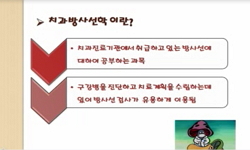<진정사효선쌍미>는 『삼국유사』에서 「효선」편에 실려 있으며, 제목에서도 ‘효선쌍미’를 내세우고 있다. 이는 <진정사효선쌍미>가 「효선」편 전체의 성격을 이해하는 데 실...
http://chineseinput.net/에서 pinyin(병음)방식으로 중국어를 변환할 수 있습니다.
변환된 중국어를 복사하여 사용하시면 됩니다.
- 中文 을 입력하시려면 zhongwen을 입력하시고 space를누르시면됩니다.
- 北京 을 입력하시려면 beijing을 입력하시고 space를 누르시면 됩니다.

<진정사효선쌍미>의 서사 분석과 효선 재해석 = The Analysis of Narrative and Reinterpretation of Filial Piety and Good Deed in “Jinjeongsa Hyoseon Ssangmi”
한글로보기https://www.riss.kr/link?id=A109175193
-
저자
정천구 (부산대학교)
- 발행기관
- 학술지명
- 권호사항
-
발행연도
2024
-
작성언어
Korean
-
주제어
효 ; 선 ; 문도 ; 득도 ; 입정 ; 생천 ; filial piety ; good deed ; hearing Buddha dharma ; achieving enlightenment ; entering samadhi ; being reborn in heaven
-
등재정보
KCI등재후보
-
자료형태
학술저널
-
수록면
167-192(26쪽)
- DOI식별코드
- 제공처
-
0
상세조회 -
0
다운로드
부가정보
국문 초록 (Abstract)
서사는 진정의 마음이나 행동의 변화에 따라 두 차례 전환되므로 크게 세 단락으로 나뉜다. 첫째 서사는 어머니의 보시를 통해 진정의 효를 보여준다. 둘째 서사에서는 출가를 미루겠다는 진정과 당장 출가해서 문도(聞道, 불도를 배움)해야 한다는 어머니가 옥신각신한다. 셋째 서사에서는 출가한 진정의 입정(入定, 선정에 듦), 의상과 그 제자들의『화엄경』강설, 어머니의 생천(生天, 하늘에 다시 태어남) 등이 차례로 서술된다.
진정의 효와 선은 첫째 서사와 셋째 서사에 잘 드러나 있다. 첫째 서사에서 진정은 어머니의 뜻을 살피는 효를 다했고, 셋째 서사에서는 출가해서 선정에 드는 경지에 이르렀다. 출가 전에는 효를, 출가 뒤에는 선을 각각 온전하게 실천했다는 것, 이것이 ‘효선쌍미’의 첫 번째 의미다. 그리고 진정이 출가해서 불도를 수행한 일은 선이면서 곧 효다. 진정이 입정이라는 득도(得道, 불도를 깨달음)의 경지에 이른 일은 선의 과보이면서 효의 완성이다. 이것이 ‘효선쌍미’의 두 번째 의미다.
그런데 진정의 어머니는 아들보다 먼저 선을 실천한 여인이다. 첫째 서사에서는 무주상보시를 보여주더니, 둘째 서사에서는 지혜를 갖추고 있으면서 자식에 대한 애착도 끊은 모습을 보여주었다. 나아가 셋째 서사에서 의상과 그 문도들이 90일 동안『화엄경』강설을 한 것도 어머니가 화엄교학을 어느 정도 이해하는 수준에 이르렀음을 말해준다. 이렇게 서사의 이면에서는 어머니의 자력 수행이 강조되고 있으므로 그 생천은 자신의 선업으로 얻은 과보라고 해석하는 것이 타당하다. 그리하여 진정의 효와 그 어머니의 선이 함께 아름답게 빛난다는 것이 효선쌍미의 세 번째 의미가 된다.
<진정사효선쌍미>는 『삼국유사』에서 「효선」편에 실려 있으며, 제목에서도 ‘효선쌍미’를 내세우고 있다. 이는 <진정사효선쌍미>가 「효선」편 전체의 성격을 이해하는 데 실마리가 됨을 의미한다. 이 글에서는 서사적 맥락 속에서 인물들의 행위를 분석해 효와 선이 여러 의미를 가지며 효선쌍미의 의미도 효와 선의 관계에 따라 달라진다는 점을 밝힌다.
서사는 진정의 마음이나 행동의 변화에 따라 두 차례 전환되므로 크게 세 단락으로 나뉜다. 첫째 서사는 어머니의 보시를 통해 진정의 효를 보여준다. 둘째 서사에서는 출가를 미루겠다는 진정과 당장 출가해서 문도(聞道, 불도를 배움)해야 한다는 어머니가 옥신각신한다. 셋째 서사에서는 출가한 진정의 입정(入定, 선정에 듦), 의상과 그 제자들의『화엄경』강설, 어머니의 생천(生天, 하늘에 다시 태어남) 등이 차례로 서술된다.
진정의 효와 선은 첫째 서사와 셋째 서사에 잘 드러나 있다. 첫째 서사에서 진정은 어머니의 뜻을 살피는 효를 다했고, 셋째 서사에서는 출가해서 선정에 드는 경지에 이르렀다. 출가 전에는 효를, 출가 뒤에는 선을 각각 온전하게 실천했다는 것, 이것이 ‘효선쌍미’의 첫 번째 의미다. 그리고 진정이 출가해서 불도를 수행한 일은 선이면서 곧 효다. 진정이 입정이라는 득도(得道, 불도를 깨달음)의 경지에 이른 일은 선의 과보이면서 효의 완성이다. 이것이 ‘효선쌍미’의 두 번째 의미다.
그런데 진정의 어머니는 아들보다 먼저 선을 실천한 여인이다. 첫째 서사에서는 무주상보시를 보여주더니, 둘째 서사에서는 지혜를 갖추고 있으면서 자식에 대한 애착도 끊은 모습을 보여주었다. 나아가 셋째 서사에서 의상과 그 문도들이 90일 동안『화엄경』강설을 한 것도 어머니가 화엄교학을 어느 정도 이해하는 수준에 이르렀음을 말해준다. 이렇게 서사의 이면에서는 어머니의 자력 수행이 강조되고 있으므로 그 생천은 자신의 선업으로 얻은 과보라고 해석하는 것이 타당하다. 그리하여 진정의 효와 그 어머니의 선이 함께 아름답게 빛난다는 것이 효선쌍미의 세 번째 의미가 된다.
다국어 초록 (Multilingual Abstract)
The narrative switches twice depending on changes in the person’s mind or behavior, so it is largely divided into three paragraphs. The first narrative shows Jinjeong’s filial piety through his mother’s almsgiving. In the second narrative, there is an argument between Jinjeong who wants to delay becoming a monk and his mother who urges him to become a monk immediately and hear Buddha dharma. In the third narrative, Jinjeong’s entrance into samadhi after becoming a monk, Uisang and his disciples' lecture on the Avatamsaka Sutra, and his mother’s rebirth in heaven are sequentially described.
Jinjeong’s filial piety and good deed are well revealed in the first and third narratives. In the first narrative, Jinjeong fulfilled his filial piety by observing his mother’s will, and in the third narrative, he became a monk and reached the state of entering samadhi. This is the first meaning of ‘Hyoseon Ssangmi’: practicing filial piety before becoming a monk and practicing good deeds after becoming a monk. And the act of becoming a monk and practicing Buddhism is both good deed and filial piety. Reaching the state of enlightenment called entering samadhi is the result of good deed and the completion of filial piety. This is the second meaning of ‘Hyoseon Ssangmi’.
Jinjeong’s mother is a woman who practiced good deeds long before her son’s practice. In the first narrative, she showed that she gaved alms without even thinking about giving, and in the second narrative, she showed that not only was she equipped with wisdom, but she also broke her attachment to her son. Furthermore, in the third narrative, the fact that Uisang and his disciples gave lectures on the Avatamsaka Sutra for 90 days shows that the mother had reached a certain level of understanding of the Avatamsaka doctrine. Since the mother’s self-discipline is emphasized behind the narrative, it is reasonable to interpret her rebirth in heaven as a result of her own good deeds. Thus, the third meaning of Hyoseon Ssangmi is that Jinjeong’s filial piety and his mother’s good deeds shine beautifully together.
<Jinjeongsa Hyoseon Ssangmi(眞定師孝善雙美)> is included in the “Hyoseon(孝善, filial peity and good deed)” section of Samguk Yusa(三國遺事), and the title also suggests ‘Hyoseon Ssangmi(孝善雙美)’. This means that <J...
<Jinjeongsa Hyoseon Ssangmi(眞定師孝善雙美)> is included in the “Hyoseon(孝善, filial peity and good deed)” section of Samguk Yusa(三國遺事), and the title also suggests ‘Hyoseon Ssangmi(孝善雙美)’. This means that <Jinjeongsa Hyoseon Ssangmi> serves as a clue to understanding the character of the entire Hyoseon section. In this article, by analyzing the actions of the characters in the narrative context, it is revealed that filial piety and good deed have multiple meanings, and that the meaning of filial piety and good deed changes depending on the relationship between filial piety and good deed.
The narrative switches twice depending on changes in the person’s mind or behavior, so it is largely divided into three paragraphs. The first narrative shows Jinjeong’s filial piety through his mother’s almsgiving. In the second narrative, there is an argument between Jinjeong who wants to delay becoming a monk and his mother who urges him to become a monk immediately and hear Buddha dharma. In the third narrative, Jinjeong’s entrance into samadhi after becoming a monk, Uisang and his disciples' lecture on the Avatamsaka Sutra, and his mother’s rebirth in heaven are sequentially described.
Jinjeong’s filial piety and good deed are well revealed in the first and third narratives. In the first narrative, Jinjeong fulfilled his filial piety by observing his mother’s will, and in the third narrative, he became a monk and reached the state of entering samadhi. This is the first meaning of ‘Hyoseon Ssangmi’: practicing filial piety before becoming a monk and practicing good deeds after becoming a monk. And the act of becoming a monk and practicing Buddhism is both good deed and filial piety. Reaching the state of enlightenment called entering samadhi is the result of good deed and the completion of filial piety. This is the second meaning of ‘Hyoseon Ssangmi’.
Jinjeong’s mother is a woman who practiced good deeds long before her son’s practice. In the first narrative, she showed that she gaved alms without even thinking about giving, and in the second narrative, she showed that not only was she equipped with wisdom, but she also broke her attachment to her son. Furthermore, in the third narrative, the fact that Uisang and his disciples gave lectures on the Avatamsaka Sutra for 90 days shows that the mother had reached a certain level of understanding of the Avatamsaka doctrine. Since the mother’s self-discipline is emphasized behind the narrative, it is reasonable to interpret her rebirth in heaven as a result of her own good deeds. Thus, the third meaning of Hyoseon Ssangmi is that Jinjeong’s filial piety and his mother’s good deeds shine beautifully together.
동일학술지(권/호) 다른 논문
-
유의(儒醫) 석봉(石峰) 김병태(金抦泰) 가문의 대택(大宅) 경영
- 전남대학교 인문학연구원
- 김종수
- 2024
- KCI등재후보
-
초등학교 교과서를 통해 본 가족담론의 변화: 1-2학년 사회과 교과서 및 통합교과서를 중심으로
- 전남대학교 인문학연구원
- 박미선
- 2024
- KCI등재후보
-
玉川 趙德鄰의 親族 관련 祭文에 나타난 애도방식과 의미
- 전남대학교 인문학연구원
- 최은주
- 2024
- KCI등재후보
-
‘잃어버린’ 모성과 상실의 트라우마, 책임은 누구에게 있는가?
- 전남대학교 인문학연구원
- 김재민
- 2024
- KCI등재후보




 KCI
KCI






